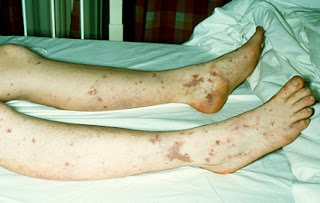Community-acquired
meningitis can be caused by several treatable and untreatable infectious
etiologies (e.g., bacterial, viral, and fungal infections), but most commonly
the etiology is unknown. Studies show that risk factors for bacterialmeningitis include age, immunosuppression, genetic susceptibility, andanatomical defects. Mortality and morbidity for bacterial meningitis is high,
with risk factors for a poor outcome including systemic compromise and a low
level of consciousness. Outcome largely depends on rapid initiation of an
effective empiric treatment, adjusting for age, systemic symptoms, and
antimicrobial resistance .While there is some understanding of the effect of
age and other risk factors on susceptibility to community-acquired meningitis,
there are no studies exploring gender differences in community-acquired
meningitis. The purpose of this study is to investigate gender differences in
clinical presentation, laboratory and imaging results, etiologies and
prognostic factors in male and female patients with community-acquired meningitis.
Case
definition:This is a sub-study of another community-acquired meningitis study.
Each adult patient (older than 17 years) enrolled in the study had
community-acquired symptoms of meningitis (such as headache, stiff neck, fever,
focal neurological deficits, or altered mental status) and a cerebrospinal
fluid (CSF) white cell count of greater than 5 cells/mm3. These patients
presented to an emergency department at a Houston-area hospital between 2005
and 2010. The University of Texas Health Science Center in Houston Committee
for the Protection of Human Subjects and the Memorial Hermann Hospital Research
Review Committee approved this study. For more.....

No comments:
Post a Comment